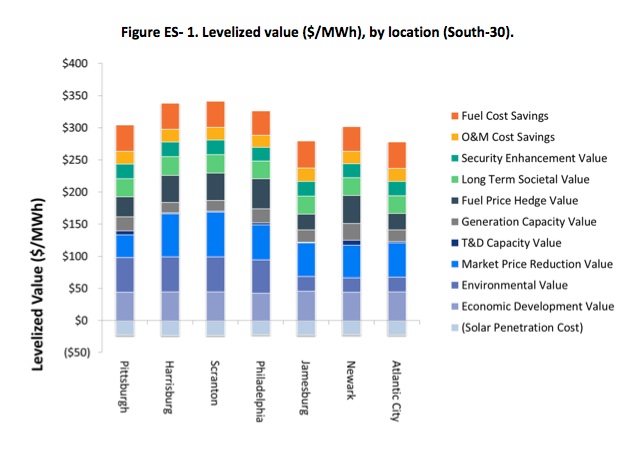NJ’s, PA’s SREC markets make solar a good value for ratepayers
 A new study in Pennsylvania and New Jersey found that the value of solar was higher than the amounts that ratepayers or paying for it as part of their electric bill. The study conducted on the behalf of Mid-Atlantic Solar Energy Industries Association (MSEIA) and the Pennsylvania Solar Energy Industries Association (PASEIA) by consulting firm Clean Power Research, found that energy suppliers are able to purchase the power from solar arrays in both states at costs lower than the power is valued at thanks to their solar renewable energy credit markets (SRECs).
A new study in Pennsylvania and New Jersey found that the value of solar was higher than the amounts that ratepayers or paying for it as part of their electric bill. The study conducted on the behalf of Mid-Atlantic Solar Energy Industries Association (MSEIA) and the Pennsylvania Solar Energy Industries Association (PASEIA) by consulting firm Clean Power Research, found that energy suppliers are able to purchase the power from solar arrays in both states at costs lower than the power is valued at thanks to their solar renewable energy credit markets (SRECs).
In New Jersey and Pennsylvania utilities and energy providers are required to purchase certain amounts of solar and renewable energy each year. They do so by purchasing SRECs. However, in both state markets the value of the SRECs has declined significantly as more solar energy was installed than originally anticipated. At this point SRECs in New Jersey currently cost about $60 per megawatt hour or 6 cents per kilowatt hour. They’re even lower, $20 per megawatt hour or 2 cents per kilowatt hour, in Pennsylvania.
But the study puts the total value of energy generated by PV at $256 to $318 per megawatt hour produced. That’s because of the societal and long-term benefits solar offers, like pricing security and no fuel price fluctuations. All of PV’s added, according to the report, ranges from $150 to $200 per megawatt hour. Since the SREC values are considerably lower it means savings for ratepayers, who ultimately pay for the PV arrays through their rates. “The direct matter studied was the avoided cost solar produces on the wholesale market,” said MSEIA Vice President and Advanced Solar Products CEO Lyle Rawlings.
“Solar has a unique property in that it produces most during the peak usage and highest-cost periods on the market and is thus able to displace the highest-cost sources in the market,” Rawlings said. “The value attributed by every kilowatt hour of solar on the market was found to be quite high.”
Rawlings said the states should expand their SREC markets but to keep SREC prices low, to encourage more solar as a lower-cost alternative to other peak power sources. “If rate payers are making $100 on every megawatt hour delivered then we should give them more of that power source,” he said.
Expanding the markets in New Jersey and Pennsylvania would help stabilize
the SREC market, as would a long-term SREC purchasing strategy like in Connecticut,” Rawlings said. “We think the SREC market should be reformed and do long-term SREC instead of this chaotic market design.” While the same holds true for both states, it’s more important for Pennsylvania to take action. He contended that the state’s SREC market had has totally collapsed and that the state needs to expand its renewable portfolio requirements.



